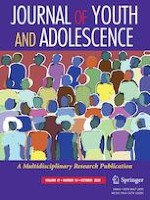29-08-2020 | Empirical Research
Sleep Problems and Drinking Frequency among Urban Multiracial and Monoracial Adolescents: Role of Discrimination Experiences and Negative Mood
Gepubliceerd in: Journal of Youth and Adolescence | Uitgave 10/2020
Log in om toegang te krijgenAbstract
Mounting evidence suggests that multiracial adolescents may be at greater risk than their monoracial peers for both sleep problems and alcohol use. However, mechanisms underlying these uniquely-heightened risky health behaviors among multiracial adolescents remain a gap in the literature. This cross-sectional study examined a risk pathway involving discrimination experiences and negative mood underlying racial disparities in concurrent sleep problems and drinking frequency. Students at an urban, socioeconomically-disadvantaged high school (N = 414; grades 9–11, Mage = 16.00 [SD = 1.08]; 57% female; 17% multiracial, 41% Black, 22% White, 18% Asian, 2% Other; 12% Hispanic/Latinx) completed a survey. Path analysis demonstrated that associations of multiracial status with sleep problems (insomnia symptom severity and insufficient weekday sleep duration), but not drinking frequencies (past-year drinking or past-2-week binge-drinking frequencies), were explained by discrimination experiences and, in turn, negative mood. In ancillary analysis excluding White students, the serial indirect risk pathway was significant for both insomnia symptom severity and past-year drinking frequency outcomes. Discrimination experiences and negative mood may function as intermediate factors contributing to racial disparities in adolescent sleep problems, although longitudinal replication is needed.
